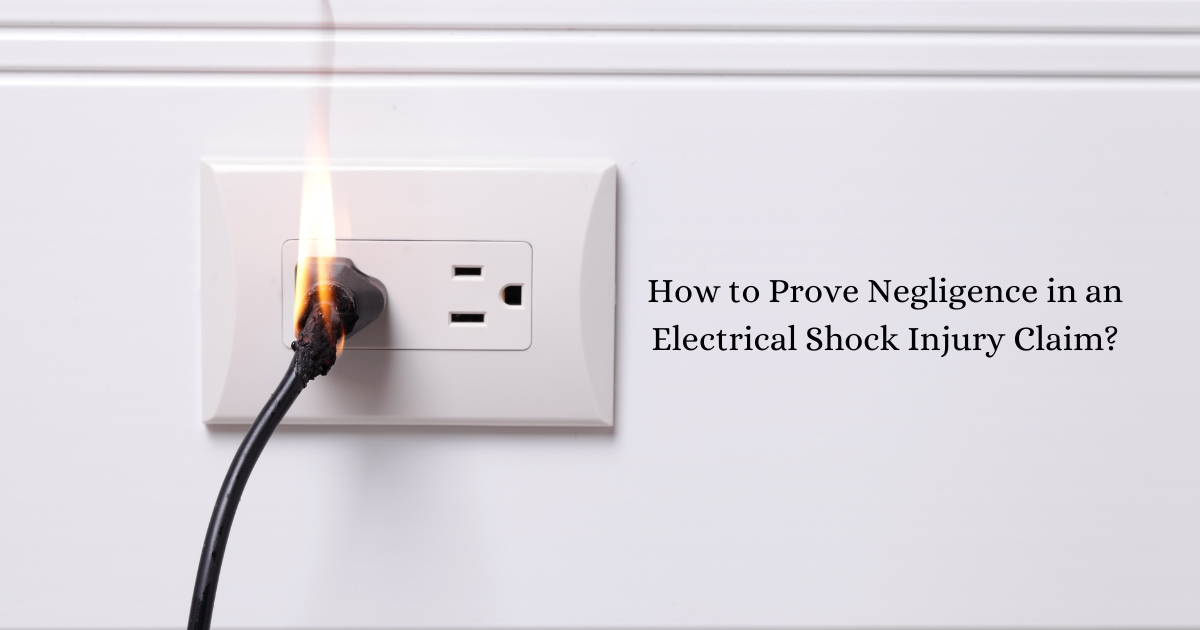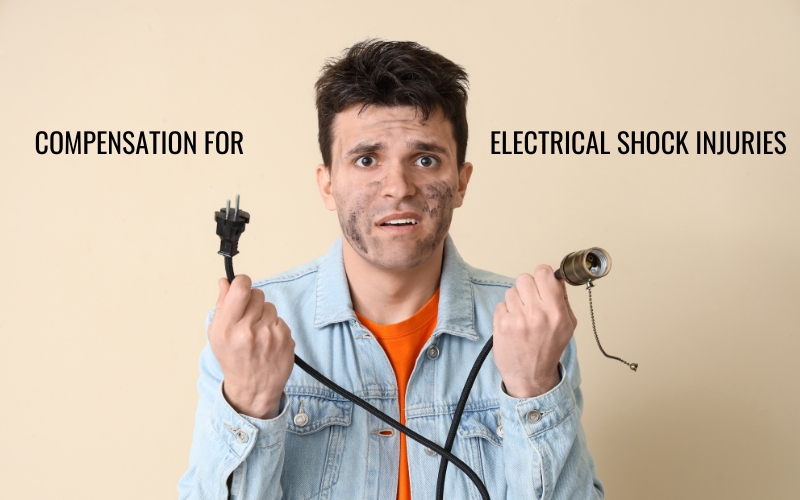
Electrical shock injuries can be devastating, leaving victims with lasting physical and emotional scars.
Have you or someone you know suffered an electrical shock due to someone else’s negligence?
Understanding how to prove negligence in these cases is crucial for securing the compensation you deserve. When it comes to navigating the complexities of electrical shock injury claims, knowledge is your strongest ally.
Proving negligence involves demonstrating that another party failed in their duty to ensure safety. This blog will guide you through each essential step, from understanding the types of electrical shock injuries to gathering the right evidence for your claim.
We’ll explore the legal definitions, key elements of negligence, and what you need to prove your case effectively. If you’re feeling overwhelmed, don’t worry—we’ll break it down together.
Let’s dive in and empower you with the information you need to seek justice and compensation for your electrical shock injury. Your path to recovery starts here!
The Reality of Electrical Shock Injuries
Electrical shock injuries can range from mild to life-threatening. Understanding these injuries helps victims comprehend their rights and the severity of their situation.
Definition and Types: Electrical shock occurs when the body becomes part of an electrical circuit. Common types include:
- Low Voltage Shock: Often harmless, but can still cause injuries.
- High Voltage Shock: Can cause severe burns, cardiac arrest, or death.
- Arc Flash: A sudden discharge of electricity that can lead to catastrophic injuries.
Common Causes: Various factors contribute to electrical shocks, including:
- Faulty Wiring: Outdated or damaged wiring can create dangerous situations.
- Defective Products: Appliances or tools with manufacturing defects pose serious risks.
- Statistics on Electrical Shock Injuries: Each year, thousands suffer from electrical shocks. For example, the National Safety Council reports that over 400 people die from electrical injuries annually. This highlights the need for safety and accountability.
Understanding Negligence in Legal Terms
Negligence is a cornerstone of personal injury law, playing a critical role in electrical shock injury claims.
- Defining Negligence: It occurs when someone fails to act with reasonable care, leading to harm.
- Key Elements of Negligence:
- Duty of Care: The responsibility to act safely and prevent harm.
- Breach of Duty: Failure to meet that responsibility.
- Causation: The link between the breach and the injury.
- Damages: The actual harm suffered by the victim.
Understanding these elements provides a solid foundation for pursuing a claim.
Who Holds the Responsibility? Duty of Care in Electrical Shock Cases
Duty of care determines who is accountable in electrical shock incidents. It’s essential to recognize who owes this responsibility.
Property Owners: They must ensure that their premises are safe. This includes proper wiring and equipment maintenance.
Manufacturers: Companies that produce electrical products must guarantee their items are safe for consumer use.
Examples of Duty of Care Scenarios:
- A landlord neglecting to fix faulty wiring in an apartment.
- A manufacturer failing to conduct adequate safety testing on an appliance.
Recognizing these responsibilities sets the stage for establishing negligence.
Demonstrating Breach of Duty
Once you establish who holds the duty of care, the next step is proving that they breached this duty.
Demonstrating Breach:
To show a breach, you need to illustrate how the responsible party failed to uphold their duty of care.
Common Breaches in Electrical Shock Cases:
- Neglecting Maintenance: Failing to perform regular inspections or repairs.
- Ignoring Safety Standards: Not adhering to local electrical codes or industry safety guidelines.
By proving these breaches, you strengthen your case for negligence.
Connecting the Dots: Causation in Your Claim
Causation is vital for demonstrating negligence. It links the breach of duty to the injury suffered.
Understanding Causation:
Causation means proving that the breach directly resulted in the injury.
Establishing a Direct Link:
- Gather medical records showing the injury’s severity.
- Collect expert testimony from electrical safety professionals who can explain how the breach led to the injury.
By solidifying the connection, you bolster your claim and reinforce the argument for compensation.
Building Your Case: Gathering Evidence
Evidence is the backbone of any negligence claim. Knowing what to collect can significantly impact your case.
Types of Evidence Needed:
- Medical Records: Document your injuries and treatments.
- Accident Reports: Obtain police reports or incident logs.
- Witness Statements: Gather accounts from those who witnessed the incident.
Expert Testimony:
Professionals in electrical safety can provide crucial insights into how the negligence caused your injuries. Their input adds credibility and strengthens your case.
Navigating the Claims Process
Filing a negligence claim can be daunting. Understanding the steps involved makes the process smoother.
Steps for Filing a Claim:
- Consult with a personal injury attorney experienced in electrical shock cases.
- Collect and organize all necessary evidence.
- Submit a formal claim to the insurance company.
Important Timelines and Legal Considerations:
- Statutes of Limitations: Be aware of the time limits for filing your claim.
- Negotiation: Be prepared for potential negotiations with insurance adjusters.
Proving negligence in an electrical shock injury claim can seem daunting, but armed with the right knowledge, you can navigate this challenging process. Understanding the elements of duty, breach, causation, and evidence helps you build a strong case. Remember, you don’t have to face this alone. Seeking legal assistance can provide the support you need to pursue fair compensation. Take the first step toward justice today—your future is worth it!



